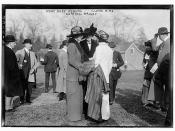St. Mary's church is located on Portsea Island and was built on the island's highest point. It was not the first church to be built on this site in actual fact it was the third. Records of earlier churches on this site date back to 1170, around the time the first church was believed to have been built. At that time the parish of St. Mary's extended to where modern day Stubbington Avenue is. The parish would have been responsible for all the people living in it and would have been expected to look after them. There was a great increase in he number of people living in the parish between the 18th and 19th centuries.
Reverend J V Stewart took over from Reverend Gilpin in 1929. He soon started raising money for a new church, which was finally built in 1844. This church could not seat enough people and was unpopular which is why it didn't last very long and was demolished in 1887.
The current church was built in 1878 after Canon Edgar Jacob became the vicar of the parish.
Many of the visitors today believe that the current church was built in The Middle Ages which is understandable, as many of its features seem to suggest this. However, as previously mentioned the church was built in the 19th century.
The architect, Arthur Blomfield, was quite clearly influenced by churches from the Middle Ages and intended for St. Marys to look like one. A lot of the ideas and features must also have come from Canon Edgar Jacob himself.
The church's 'Middle Aged features' include niches with no statues, buttresses, the west tower, pinnacles, arrow slits, gargoyles, ornate carvings and large stained glass windows. There are also gravestones from some of the previous churches that still existed...
![[Portrait of Imogene Coca, Mary Lou Williams, and Ann Hathaway, between 1938 and 1948] (LOC)](https://s.writework.com/uploads/9/91750/portrait-imogene-coca-mary-lou-williams-and-ann-hathaway-be-thumb.jpg)
![[Mary, Queen of Scots] (LOC)](https://s.writework.com/uploads/9/91750/mary-queen-scots-loc-thumb.jpg)
